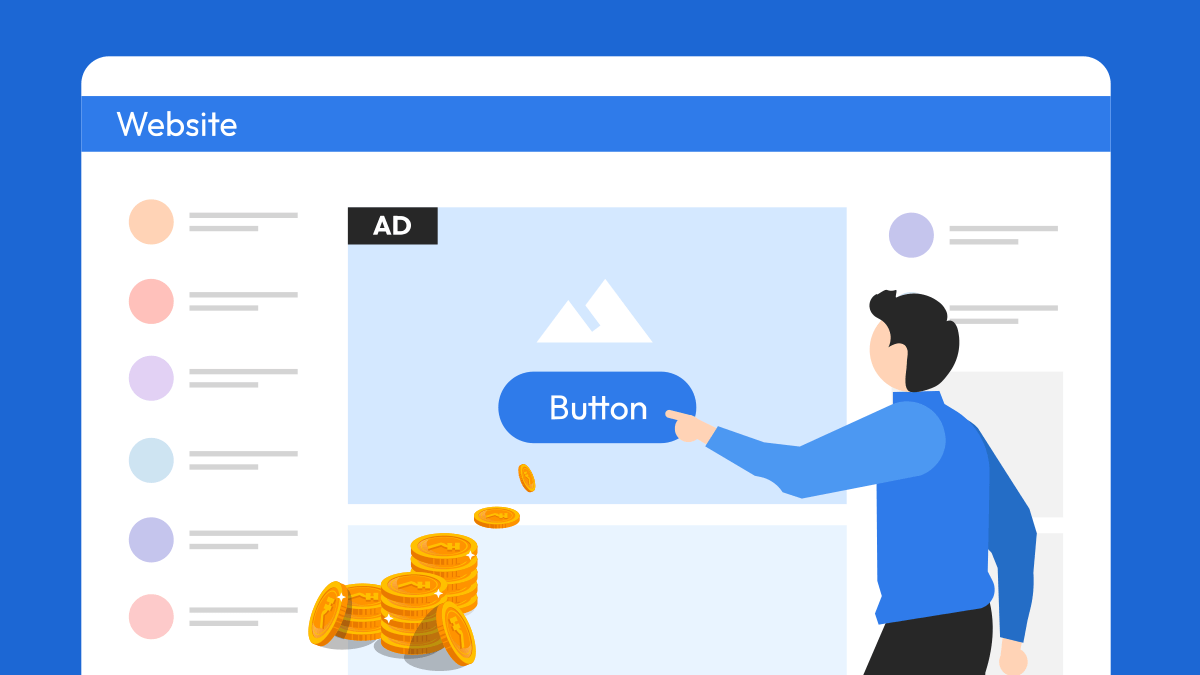In the ever-evolving landscape of digital marketing and business strategies, understanding various pricing models is crucial. One such model that has gained significant attention is Cost Per Duration. But what exactly is Cost Per Duration, and how can it benefit your business? This comprehensive guide will delve into the intricacies of this pricing strategy, providing you with the knowledge and tools to implement it effectively.
We will also explore the formula for calculating CPD and important notes when using CPD in Advertising campaigns. Understanding CPD will help businesses optimize advertising costs and achieve higher efficiency. In this article, we will learn about CPD – Cost Per Duration and its role in the field of advertising and marketing.
CDP is a “secret” helps businesses attract potential customers, increase conversion rates and maximize profits.
What is CPD – Cost Per Duration?
CPD or full name Cost Per Duration is a term used to refer to the cost of advertising airtime based on its display time on media channels such as: Facebook, Instagram, Youtube, television, website, Mobile application, …
Understanding the concept of Cost Per Duration (CPD) is crucial for businesses aiming to optimize their cost structures and enhance overall efficiency. At its core, CPD is a metric used to calculate the cost incurred over a specific duration. It serves as a key indicator for businesses to measure how effectively they are utilizing their resources concerning time.The notion of CPD becomes particularly relevant in sectors where time is a critical factor, such as advertising, project management, and service industries. For instance, in the advertising realm, CPD can help marketers determine the cost of running an ad campaign over a particular time frame, allowing them to assess the return on investment (ROI) and make data-driven decisions about budget allocations.CPD is not just a financial metric; it’s a strategic tool that provides insights into operational efficiency and cost management. By understanding CPD, businesses can identify areas where they might be overspending relative to the time invested, thereby enabling them to streamline processes and improve financial performance.
Through CDP, the business Brand will be known to more people. It is especially suitable when businesses implement events and promotional programs for a limited time.
The fee that a business has to pay when using CPD will vary depending on the actual situation. Some factors that affect the CPD fee include:
- Display Channel
- Broadcast time
- Ad Size
- Reach
- View

CPD Calculation Formula
To grasp the full scope of CPD, it’s essential to break down its components. Cost Per Duration is calculated by dividing the total cost by the total duration. This simple formula can be applied across various contexts, from evaluating the cost-effectiveness of marketing campaigns to assessing project budgets.
CPD costs are calculated using the following formula:
| Formula for CPD = Advertising Cost / Airtime |
In there:
- Advertising costs: Is the amount of money that a business must pay to the advertising service provider.
- Broadcast time: Is the time that the advertisement is displayed on advertising channels.
For example, your business spends $500 to run a 30-second YouTube ad. So the CPD cost of this ad is:
| CPD = $500 / 30 seconds = $16.67/second |
In addition, CPD can also be calculated based on the number of views or ad reach per day. Specifically:
| CPD = Advertising Cost / Number of Views or Reach |
By employing this formula, businesses can gain a clearer understanding of how their expenditures align with their time-related goals. This clarity is instrumental in making strategic decisions that balance cost efficiency with desired outcomes.
As we explore the intricacies of CPD, we will uncover its importance in strategic planning and operational management, demonstrating how it can be leveraged to drive business success.
Features of CPD Advertising
To optimize your advertising campaign, you need to understand some of the characteristics as well as advantages and disadvantages of CPD, specifically:
Characteristic
- CPD costs are calculated based on display location and broadcast duration.
- The effectiveness of a CPD campaign depends largely on the service provider.
- Wide reach

Advantage
- Predictable revenue: The supplier will forecast revenue for a certain period of time, helping businesses grasp and at the same time plan specific business.
- Reach your target audience: CPD advertising can be targeted to specific audiences based on demographics, interests, behaviors, etc.
- Effective cost controlA: Businesses can easily budget for advertising campaigns.
- Increase brand credibility: Regular appearances on reputable media channels will help increase brand credibility.
- Performance measurement: With CPD, businesses can easily apply tools to measure the number of views, reach, and user interactions with ads.
Disadvantages
- The cost is quite high: The cost depends on many factors, however if the business chooses to broadcast on prominent channels or prime time, the cost will be even higher.
Applications in Marketing
In the dynamic world of marketing, Cost Per Duration serves as a powerful tool for evaluating the efficiency and effectiveness of advertising campaigns. By understanding and applying CPD, marketers can optimize their strategies, ensuring that every dollar spent contributes to achieving desired outcomes.
CPD in Advertising Campaigns
When it comes to advertising, CPD offers several advantages that can enhance campaign performance:
- Budget Optimization: CPD provides a clear view of how much is being spent on a campaign over a specific period. By analyzing CPD, marketers can identify areas where they might be overspending and adjust their budgets to maximize ROI.
- Performance Measurement: CPD allows marketers to assess the cost-effectiveness of different advertising channels and strategies. This data-driven approach enables marketers to focus on high-performing tactics that deliver the best results within the allocated budget.
- Real-Time Adjustments: With CPD as a metric, marketers can make real-time adjustments to their campaigns, optimizing performance and ensuring that resources are allocated to the most effective channels.
- Enhanced Targeting: By understanding the CPD of various campaigns, marketers can refine their targeting strategies, reaching the right audience at the right time while minimizing costs.
Incorporating CPD into marketing strategies empowers businesses to operate more efficiently, ensuring that advertising efforts are aligned with overall business goals. As a result, companies can achieve greater visibility, engagement, and conversions while maintaining cost control.

Financial Management
Beyond marketing, Cost Per Duration plays a vital role in financial management, offering insights that can drive better budgeting and forecasting decisions. By leveraging CPD, businesses can enhance their financial planning processes, ensuring that resources are allocated effectively and efficiently.
CPD in Budgeting and Forecasting
The integration of CPD into financial management practices offers several benefits:
- Accurate Budgeting: CPD provides a clear picture of how costs are distributed over time, enabling businesses to create more accurate budgets that align with their strategic objectives.
- Resource Allocation: By understanding CPD, companies can allocate resources more effectively, ensuring that funds are directed towards initiatives that deliver the most value.
- Risk Mitigation: CPD allows businesses to identify potential cost overruns early in the process, enabling them to take corrective action and mitigate financial risks.
- Strategic Planning: By analyzing CPD data, companies can identify trends and patterns that inform long-term strategic planning, ensuring that financial goals are met and sustained over time.
Incorporating CPD into financial management practices empowers businesses to make informed decisions that optimize resource utilization and drive financial success. By understanding and applying CPD, companies can achieve greater financial stability and growth.
The Role of CPD Advertising in Business
Online businesses are growing rapidly, so promoting brand image, products and services is extremely necessary.
Here are some of the benefits that CPD brings to businesses:
- Increase brand awareness: CPD advertising helps businesses promote their brands and products to more people.
- Attract potential customers: CPD can attract potential customers who are interested in a business’s products or services.
- Boost sales: CPD advertising has the ability to motivate customers to make purchases by providing product information and attractive promotions.
When should Businesses use CPD?
CPD advertising is a form of advertising that reaches many potential customers. It helps businesses increase their competitiveness in the market, build brand image in the minds of consumers and bring significant revenue to businesses.
However, with the advantages and disadvantages mentioned above, businesses may still be hesitant because the investment cost for advertising is quite large. Therefore, analyze the market and plan your advertising strategy clearly before applying and consider using it at prominent times such as:
- Promote new brands launched in the market.
- Want to promote brand recognition, leave an impression in the minds of customers.
- Introduce and advertise new products.
- Implement promotional programs in batches to attract a large number of customers and increase revenue.

Notes when applying CPD Advertising for Businesses
To ensure maximum effectiveness of CPD advertising campaigns, businesses need to note the following points:
Search and Identify Target Customers
To reach the right audience with your ads, you need to identify the right target audience. This can be done through research on their demographics, interests, behaviors, and needs, or you can use tools like Google Adwords to shorten the search time.
Based on that, businesses will build campaign content and choose appropriate advertising channels, while optimizing advertising costs.
Balance CPD Advertising Duration Appropriately
The ad duration should fit your budget and campaign goals, but you need to balance it appropriately. Each CPD ad usually lasts about 30 seconds to 1 minute.
The advertisement should not be too long to avoid boring and impatient viewers, leading to “skipping” the advertisement. However, if it is too short, it will not have enough time to convey the message that the business wants about the product or service.
Show CPD Ads with Photos/Videos
According to statistics, Video ads have a click-through rate 5 times higher than other types of ads. And users tend to remember information conveyed through videos 95% better than regular text.
Therefore, businesses should invest in producing eye-catching videos/images that attract maximum users to bring the highest advertising efficiency.
Attractive Content, Suitable for the Product
Even though you invest in images and videos, the content about product and service information still needs to be neat and attractive to viewers. Make sure that the message is consistent with the value the product brings to customers.
At the same time, businesses need to carefully censor content, paying attention to ensure that all words and statements do not offend or discriminate against any individual or organization to avoid causing controversy and conflicting opinions from the public.
Measuring Advertising Performance
CDP advertising is easy to measure. Businesses can use measurement support tools to track the number of views, the number of times the ad reaches customers, and the number of interactions with the ad to evaluate the effectiveness of the campaign. For example: Google Analytics, Adobe Analytics, Facebook Pixel, …
Distinguishing between CPD, CPC and CPO
Below is a breakdown of the three types of advertising costs and the pros and cons of each:
| Ad type | Describe | Advantage | Disadvantages |
| CPD
(Cost Per Duration) |
|
|
|
| CPC
(Cost Per Click) |
|
|
|
| CPO
(Cost Per Order) |
|
|
|
Challenges and Limitations
While Cost Per Duration is a powerful metric, it’s not without its challenges and limitations. Understanding these potential pitfalls is essential for businesses looking to leverage CPD effectively in their operations and strategies.
Potential Pitfalls
Several challenges can arise when using CPD, including:
- Data Accuracy: Accurate data is crucial for calculating CPD. Inaccurate or incomplete data can lead to incorrect CPD calculations, resulting in flawed decision-making.
- Contextual Considerations: CPD does not account for qualitative factors such as customer satisfaction or brand impact, which can also influence a campaign’s success. Relying solely on CPD without considering these factors may lead to suboptimal decisions.
- Dynamic Markets: In rapidly changing markets, CPD may need frequent recalculation to stay relevant. Businesses must remain agile and adaptive to ensure CPD remains a useful metric.
- Complex Projects: For complex projects with multiple phases, calculating a single CPD value may not accurately reflect differing costs and durations across phases. A detailed breakdown might be necessary to gain meaningful insights.
Best Practices for Accurate Measurement
To mitigate these challenges, businesses can adopt several best practices:
- Ensure Data Quality: Implement robust data collection and management systems to ensure the accuracy and completeness of data used in CPD calculations.
- Contextual Analysis: Complement CPD analysis with other qualitative assessments to gain a holistic understanding of campaign or project performance.
- Regular Updates: Regularly update CPD calculations to reflect changes in costs or durations, especially in dynamic industries.
- Phase-Specific Calculations: For complex projects, consider calculating CPD for each project phase to capture variations in costs and durations.
By recognizing and addressing these challenges, businesses can effectively utilize CPD to enhance decision-making and strategic planning.
Conclusion
In today’s competitive business landscape, Cost Per Duration emerges as an indispensable metric that provides invaluable insights into cost management and operational efficiency. By understanding and applying CPD, businesses can optimize their strategies, enhance resource allocation, and drive sustainable growth.
CPD is more than just a financial calculation; it’s a strategic tool that empowers businesses to make informed decisions, ensuring that time and resources are utilized effectively. By embracing CPD, companies can achieve a competitive edge, unlocking new opportunities for success in an ever-evolving market.
As we look to the future, the continued evolution of CPD promises exciting possibilities for innovation and growth. Businesses that stay ahead of the curve, leveraging the latest trends and technologies, will be well-equipped to navigate the complexities of modern business and achieve their strategic objectives.
FAQs about Cost per Duration
What is Cost Per Duration?
Cost Per Duration is a pricing model where the cost is determined based on the duration of service or usage. It offers a transparent and flexible approach to pricing, aligning costs with actual usage.
How is Cost Per Duration calculated?
CPD is calculated using the formula:
| CPD = Advertising Cost / Airtime |
This formula can be adapted based on specific business needs and industry standards.
What are the benefits of Cost Per Duration?
The benefits of CPD include increased transparency, better resource allocation, and enhanced customer satisfaction. It allows businesses to align costs with actual usage, providing a fair and transparent pricing structure.
How can businesses implement Cost Per Duration?
Industries where time and cost management are critical, such as manufacturing, construction, and IT services, gain substantial benefits from this metric.
Implementing CPD involves identifying services that can be priced based on duration, setting rates, monitoring usage, and communicating with clients. Using reliable tracking tools and gathering client feedback are also essential.
In which industries is Cost Per Duration most useful?
CPD is particularly useful in the service industry, digital marketing, and certain manufacturing sectors. It allows businesses to charge clients based on the actual time spent on their cases, projects, or machine usage.
What are the future trends in Cost Per Duration?
Future trends in CPD include technological advancements, market adaptations, and increased prevalence in various industries. As transparency and flexibility become more important, CPD will play a crucial role in shaping pricing strategies.
How to track Advertising Campaign CPD?
To track the CPD of your advertising campaign, you can refer to the following methods:
– Use reports from advertising platforms: Most advertising platforms such as Google Ads, Facebook Ads, etc. provide detailed reports on campaign performance, including impressions, clicks, costs, etc.
– Use web analytics tools: Tools like Google Analytics help you track user behavior on your website, thereby evaluating the effectiveness of your CPD advertising campaign.
Should I choose CPD or CPC for my Advertising Campaign?
Choosing CPD or CPC depends on the business’s budget and products.
– Businesses with high budgets, want to build a brand.
– Want the product to be widely known in the market.
– Reach out to potential users and customers.
– Businesses want to attract large amounts of traffic and increase conversion rates.
– The company’s products and services have a position in the market.
– Want to optimize advertising costs for business.
How does Cost Per Duration improve business efficiency?
By providing a clear metric to measure the cost against time, businesses can identify inefficiencies and areas for improvement, ensuring better resource allocation and time management.
Can small businesses implement Cost Per Duration effectively?
Absolutely! Small businesses, even with limited resources, can implement basic practices of Cost Per Duration to enhance their operational efficiency.
What are some common tools to calculate Cost Per Duration?
Tools ranging from simple spreadsheets to complex ERP software can be used to calculate and track Cost Per Duration effectively.
How often should Cost Per Duration be calculated?
The frequency can vary depending on the project’s length and complexity but is typically reviewed at key milestones or at the completion of a project.
Is there a specific formula for calculating Cost Per Duration?
The basic formula is total cost divided by the duration (in units of time), but variations may apply based on specific business needs or industry standards.
Comment Policy: We truly value your comments and appreciate the time you take to share your thoughts and feedback with us.
Note: Comments that are identified as spam or purely promotional will be removed.
To enhance your commenting experience, consider creating a Gravatar account. By adding an avatar and using the same e-mail here, your comments will feature a unique and recognizable avatar, making it easier for other members to identify you.
Please use a valid e-mail address so you can receive notifications when your comments receive replies.
